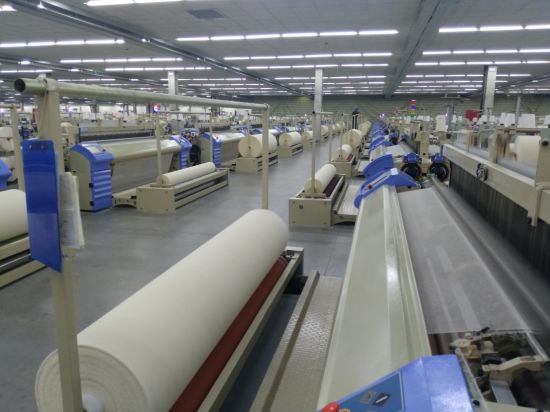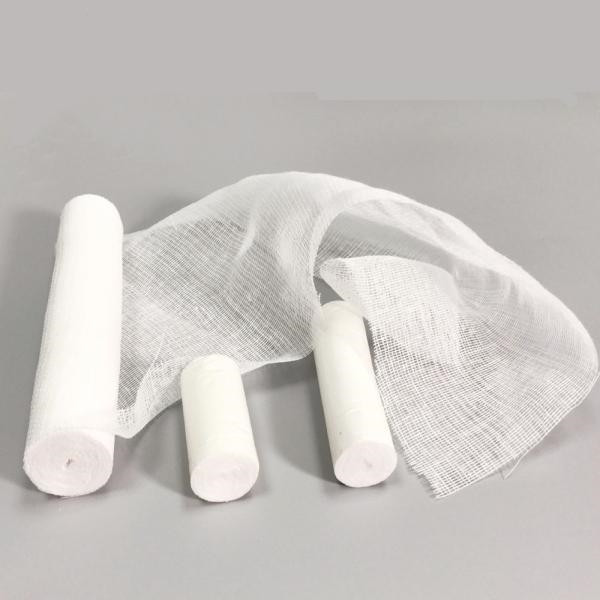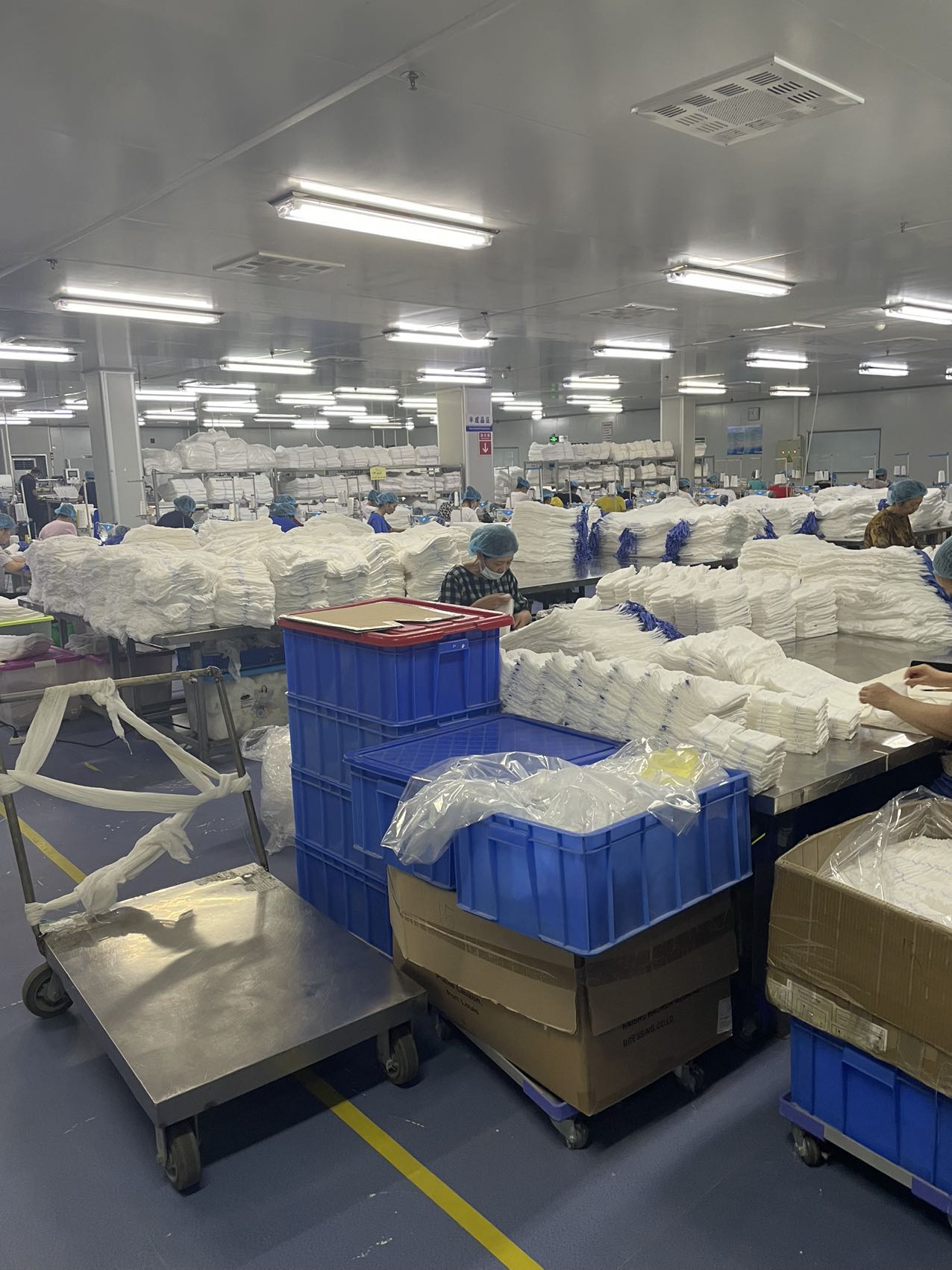Picking the right medical gauze roll is crucial for wound care and surgery because it helps with healing and keeping infections at bay. Gauze rolls are soft, absorbent medical fabrics that you can use in hospitals, clinics, and first aid kits to wrap, cushion, or protect wounds.
The key factors for selecting medical gauze roll are how well it absorbs moisture, how many layers it has, and how good the material is overall. All of these factors have a direct effect on how well the gauze works in real medical situations. They influence how much fluid a gauze absorbs, how strong it feels, and how comfortable it is for patients.
Exploring these factors will help you pick gauze packs that meet your patient’s needs. In this guide, you’ll learn how to test gauze rolls and the importance of gauze roll ply count. You’ll also learn how absorbency, ply, and quality affect performance.

Understanding Medical Gauze Rolls
Before you compare the quality or performance of different medical gauze rolls, it’s helpful that you know what they’re made of and how they differ. Gauze rolls are long strips of fabric that are either woven or not woven. They are usually made of 100% cotton or polyester blends. They can be sterile or not sterile, and they are used in almost every medical setting.
Types of Gauze Rolls
There are 4 types of gauze rollers which are:
- Cotton gauze rolls are soft, breathable, and very absorbent. They are used to dress wounds and protect them during surgery.
- Non-woven gauze rolls are made from synthetic fibers. They are stronger, don’t lint as much, and are cheaper to buy in bulk.
- Paraffin gauze rolls are covered in petroleum jelly and are great for burns and cuts that need to stay moist.
- There are sterile and non-sterile rolls. Sterile rolls are used directly on wounds, while non-sterile rolls are better for cleaning and padding.
Absorbency: The Key to Healing Wounds
Absorbency tells you how well a medical gauze roll can handle fluids from a wound. A gauze that absorbs well helps wounds heal, stops leaks, and cuts down on dressing changes. On the other hand, not being able to absorb well can cause infection or wound maceration.
What does “absorbency” mean?
Absorbency is how well the gauze can soak up and hold liquid. Cotton fibers naturally pull fluids into their structure through capillary action. The density of the weave controls how much fluid can pass through. Bleached gauze soaks up water faster, but unbleached gauze is better for wounds that are sensitive.
Factors That Influence Absorbency
- Type of fiber: Polyester dries faster than cotton, which holds more water.
- Tighter weaves take longer to absorb but last longer.
- Finishing process: Some gauze is treated to make it absorb faster or to make it less linty.
Wounds that drain a lot, like surgical or ulcerative lesions, need to be more absorbent. Low-absorbency rolls are all you need for minor injuries. Hospitals often use the gauze roll absorbency testing standard to see how much liquid a roll can hold compared to its weight. This standard makes sure that the quality is always the same for clinical use.
A balanced choice helps keep your patients wounds moist while cutting down on smell, irritation, and the need to change dressings. Beyond absorbency, the importance of gauze roll ply count can affect the gauze roll performance.

Ply Count and Layer Selection in Gauze Rolls
The number of layers of fabric that are woven together to make a medical gauze roll is called ply. It changes how well it absorbs, how long it lasts, and how well it lets air flow.
Common Ply Counts
- 4-ply: It’s light and breathable, so it’s good for cleaning or wounds that don’t drain much.
- 6 to 8 ply: The thickness is just right for moderate exudate.
- 10-ply to 12-ply: Stronger, thicker, and perfect for surgery.
The importance of gauze roll ply count is that it helps you find the right balance between thickness and performance. A higher ply count makes the material more absorbent and more expensive. For everyday use, less ply rolls are more flexible and less expensive.
Sterile vs. Non-Sterile Options
Use sterile rolls on open wounds and during surgery. Use non-sterile rolls to clean or pad things. Understanding medical gauze roll sterility vs non-sterile can help you choose the right one for the job.
The goal is to match the number of plies to the needs of the wound (4-ply for light tasks and 12-ply for deep or bleeding wounds). But layers aren’t the only thing that affects quality; materials and compliance do too. Let’s look into what makes gauze of good quality.
Evaluating Quality and Sterility Standards in Medical Gauze Rolls
The quality of each medical gauze roll you use decides how reliable it is. Soft, strong, lint-free, and sterile gauze is of high quality. Poor-quality gauze often loses fibers, irritates the skin, and makes it harder to control infections.
What Makes a Material High Quality?
- Material purity: Use only 100% cotton or approved blends.
- Weave consistency: The same texture keeps the fabric from coming apart.
- Lint-free surface: Lowers the chance of contamination.
- Sterility: Meets the medical gauze roll sterility vs non-sterile, standard.
- Certification: Products that meet FDA, CE, or ISO standards follow the gauze roll absorbency testing standard.
How to Vet Manufacturers
When you are buying gauze rolls, always know how to vet gauze roll manufacturer credibility. Look over the paperwork, the place where the product was made, and the test certificates.
Suppliers like BKAMED are known for always providing good quality and being honest about it. Rolls that aren’t made well often look uneven, weak, or very bleached.
Before placing a large order, it is best to do an evaluation of an import small batch gauze manufacturer evaluation. It lets you find problems early on without risking losing the whole shipment. It becomes easier to choose the right roll for each procedure once you understand how absorbency, ply, and quality work together.

How to Pick the Right Gauze Roll for Different Medical Procedures
Different medical situations need gauze with certain qualities. This is how to pick the best one.
For Surgical Procedures
In surgery, the most important things are cleanliness and absorbency. The best gauze roll sizes for surgical procedures are big and have a lot of layers, usually 8 to 12. These quickly soak up thick liquids while keeping their shape and comfort.
Always buy from trusted suppliers, and remember that picking the right medical gauze roll is crucial to avoid problems after surgery. To be sure of their reliability, reputable producers follow the gauze roll absorbency testing standard.
For dressing a wound in general
A 4-ply or 6-ply medical gauze roll is best for wounds with moderate exudate or daily dressing. It is light and lets air flow through it, which speeds up healing. For better healing, use it with the right antiseptic or ointment. When you buy, pay attention to factors for selecting medical gauze rolls like ply count and sterility level.
If you’re looking at suppliers from other countries, you might want to use import small batch gauze manufacturer evaluation methods. This helps make sure that the products are always of the same quality before you place a big order.
For Cleaning and Padding
When cleaning tools, wiping areas before injections, or putting padding under bandages, use non-sterile medical gauze rolls. Picking the right medical gauze roll is crucial because it helps you pick rolls that are thick enough to hold fluids but soft enough to touch skin. When making a choice, keep in mind that picking the right medical gauze roll is important for both patient safety and the efficiency and cost-effectiveness of clinical settings.
During the procurement process, make sure you follow the gauze roll absorbency testing standard and keep track of how long should medical gauze sink absorbency test results should take so you can compare suppliers on an equal basis.

Common Mistakes to Avoid When Selecting Gauze Rolls
Even experts can make mistakes when picking the right medical gauze roll for treating wounds. These mistakes often make healing slower, make patients uncomfortable, or waste supplies.
1. Ignoring Absorbency Testing Standards
A lot of people don’t check to see if the product meets a gauze roll absorbency testing standard. If you don’t test, gauze might hold too little or too much fluid, which could throw off the balance of the wound. Before you buy, always look at the absorbency data from the maker.
2. Overlooking Ply Count and Wound Type
We can’t ignore the importance of gauze roll ply count. Using low-ply gauze on a wound that is leaking causes more leakage, and using a thick 12-ply roll on a small wound keeps too much moisture in and makes it uncomfortable.
3. Buying Based on Price Alone
Cheap doesn’t always mean good. When choosing a medical gauze roll, don’t just look at the price. Think about the factors for selecting medical gauze roll such as how absorbent it is, the quality of the fibers, and how sterile it is.
4. Not checking the credibility of the manufacturer
Always know how to vet gauze roll manufacturer credibility. Brands that aren’t verified might use low-quality cotton or not sterilize their products properly. Choose well-known brands like BKAMED, which always deliver high-quality products.

Conclusion
Choosing the right medical gauze roll affects how quickly wounds heal and how well care is given. If you pay attention to absorbency, ply, and quality, you can avoid most dressing problems before they happen.
Picking the right medical gauze roll is crucial because it can affect how comfortable your patients are, how well you can control fluids, and how quickly they heal. Always consider the factors for selecting medical gauze roll, like the importance of gauze roll ply count, how sterile it is, and how well it absorbs.
The gauze roll absorbency testing standard is followed by high-quality brands, which ensures that wounds are always protected and that the product works. When you’re comparing suppliers, make sure you know how to vet gauze roll manufacturer credibility and do an import small batch gauze manufacturer evaluation before placing bulk orders.
To get professional results, work with trusted suppliers like BKAMED, who follow strict medical standards and give you reliable paperwork.

